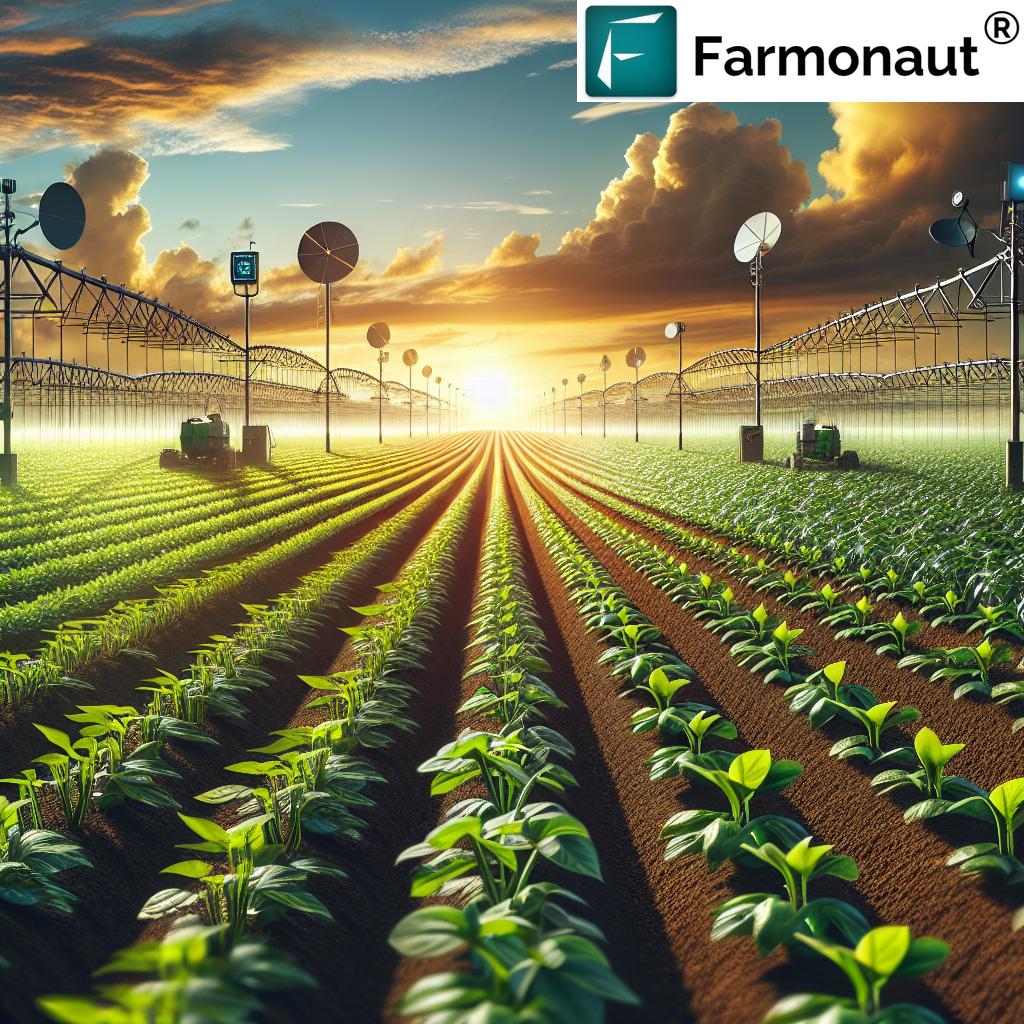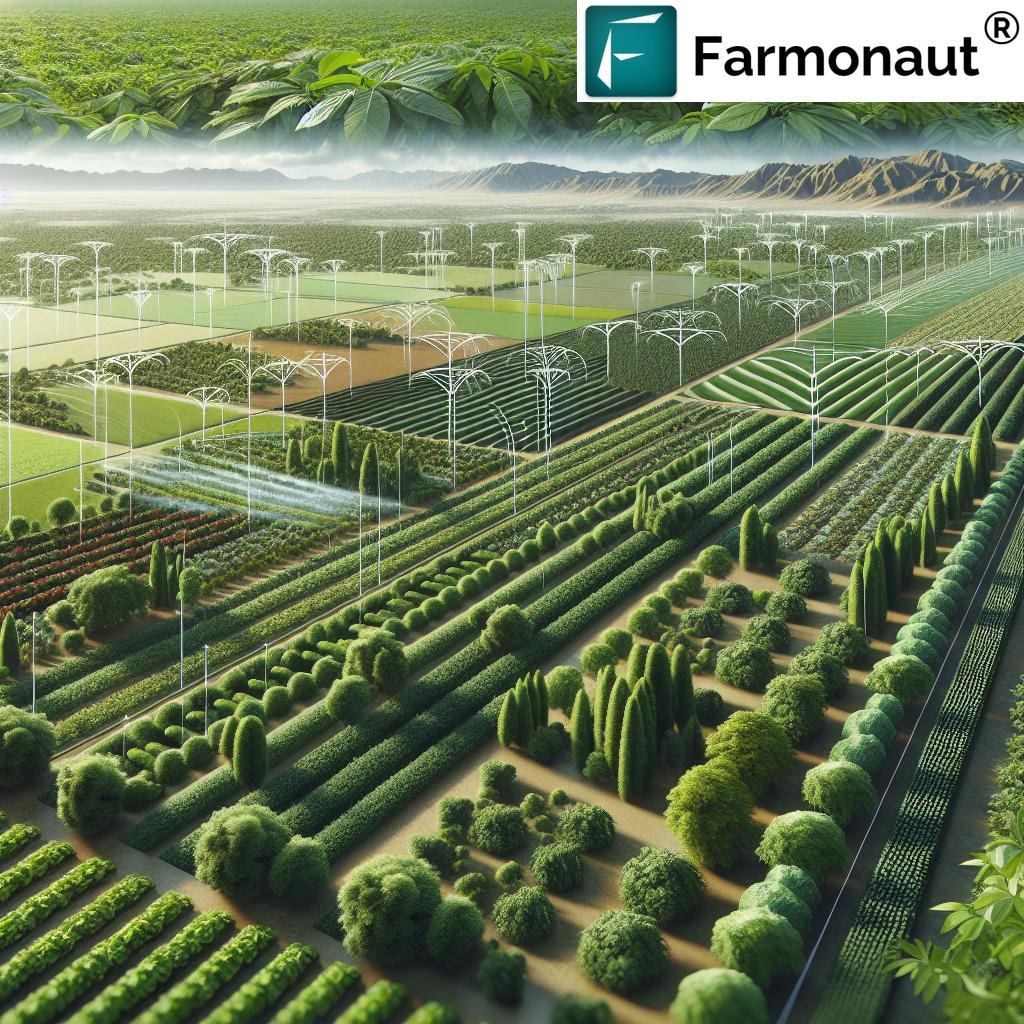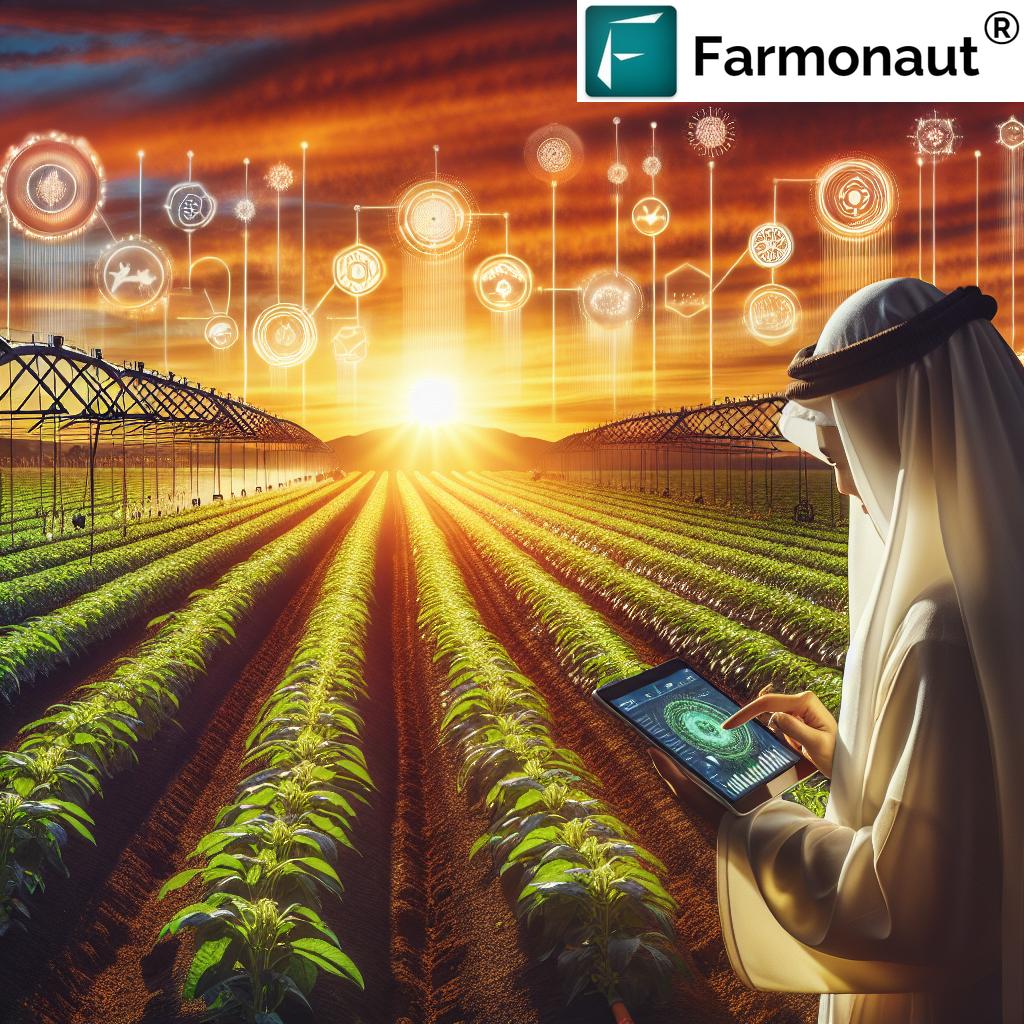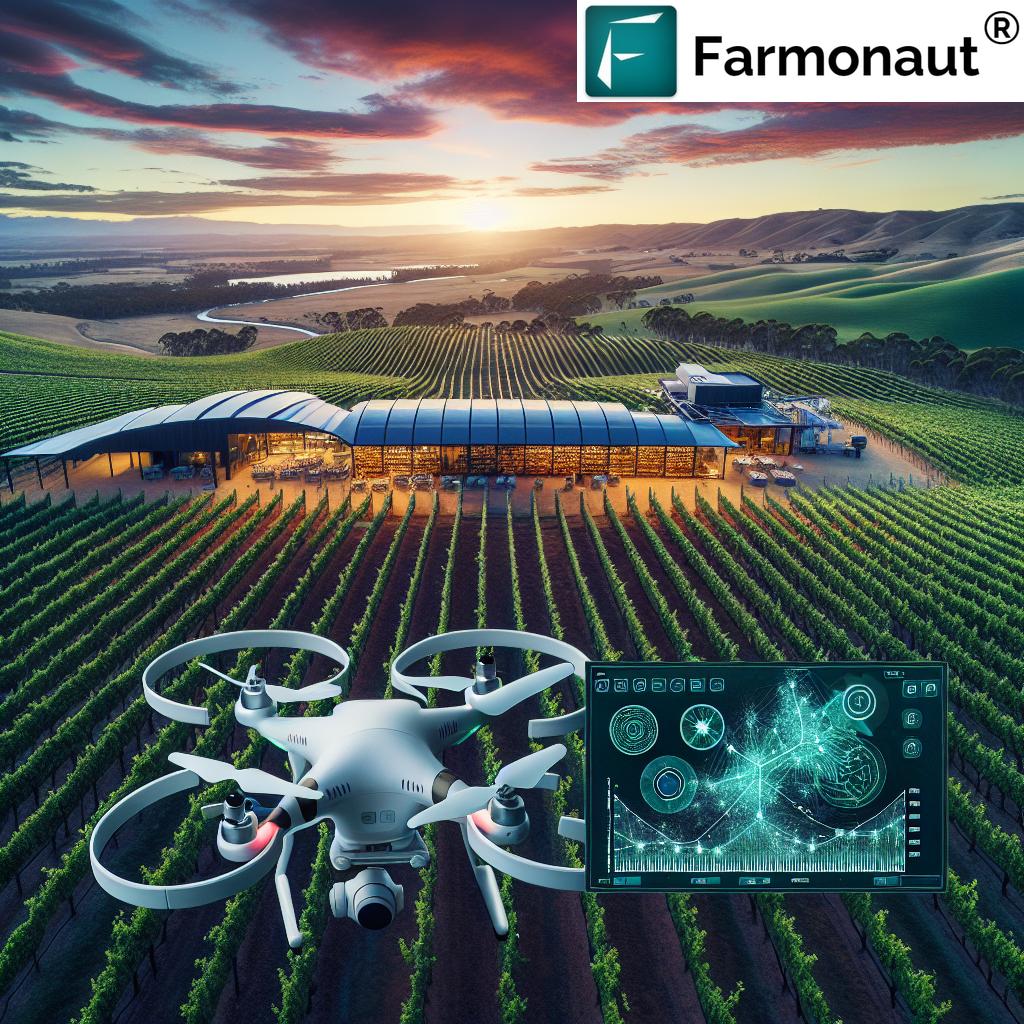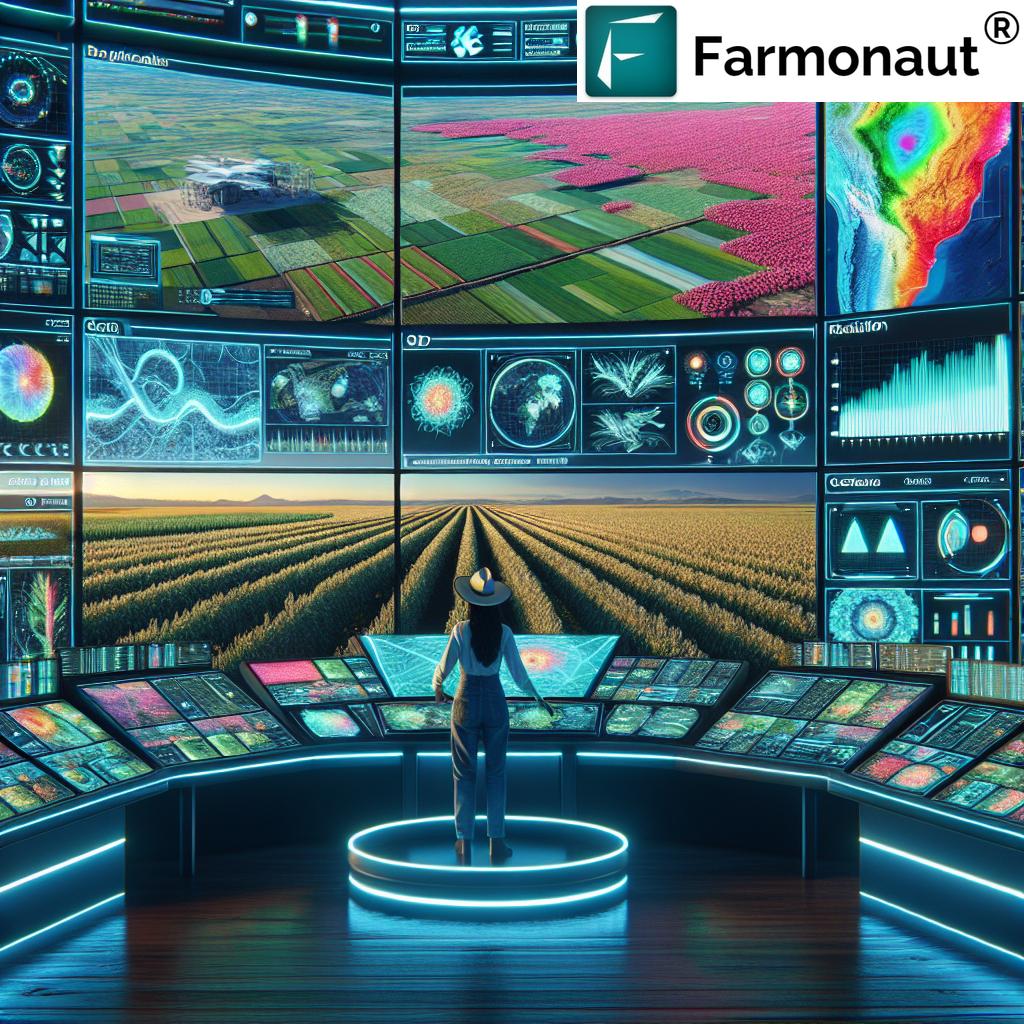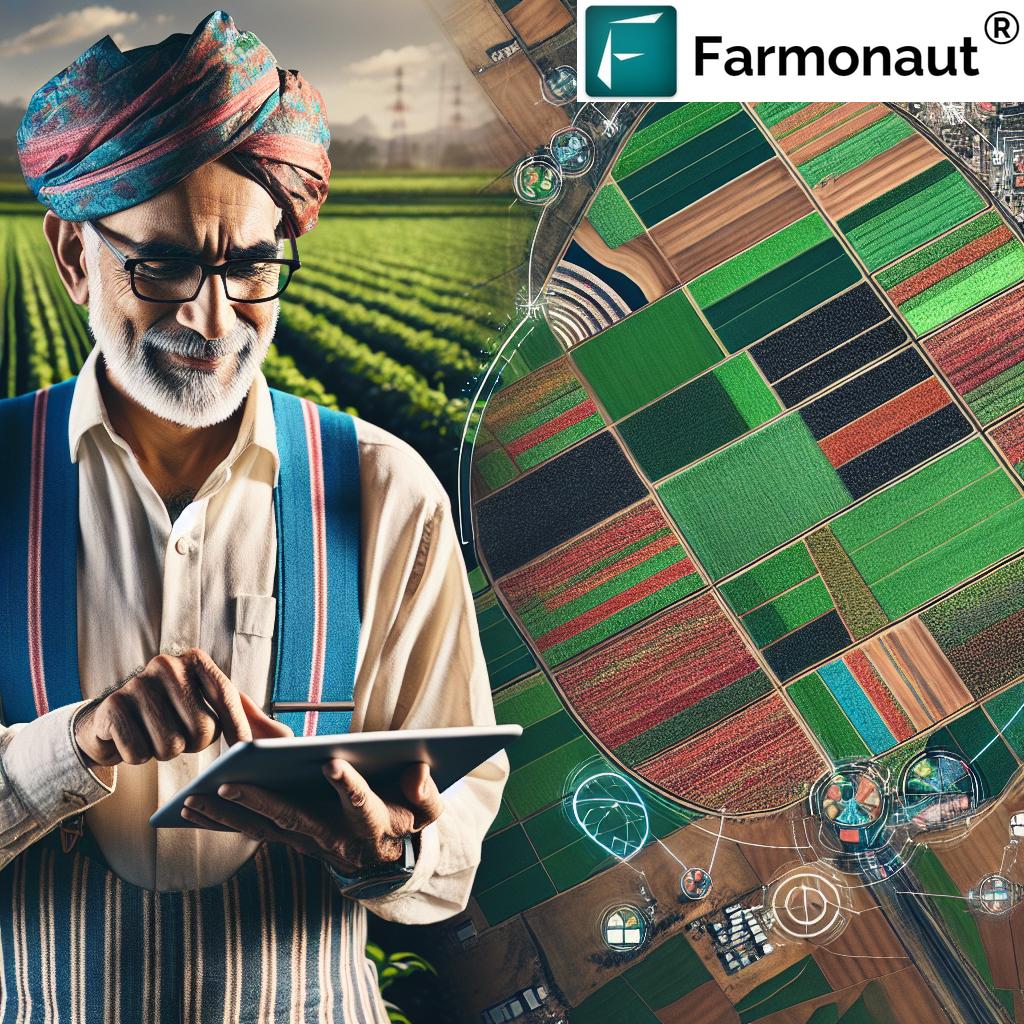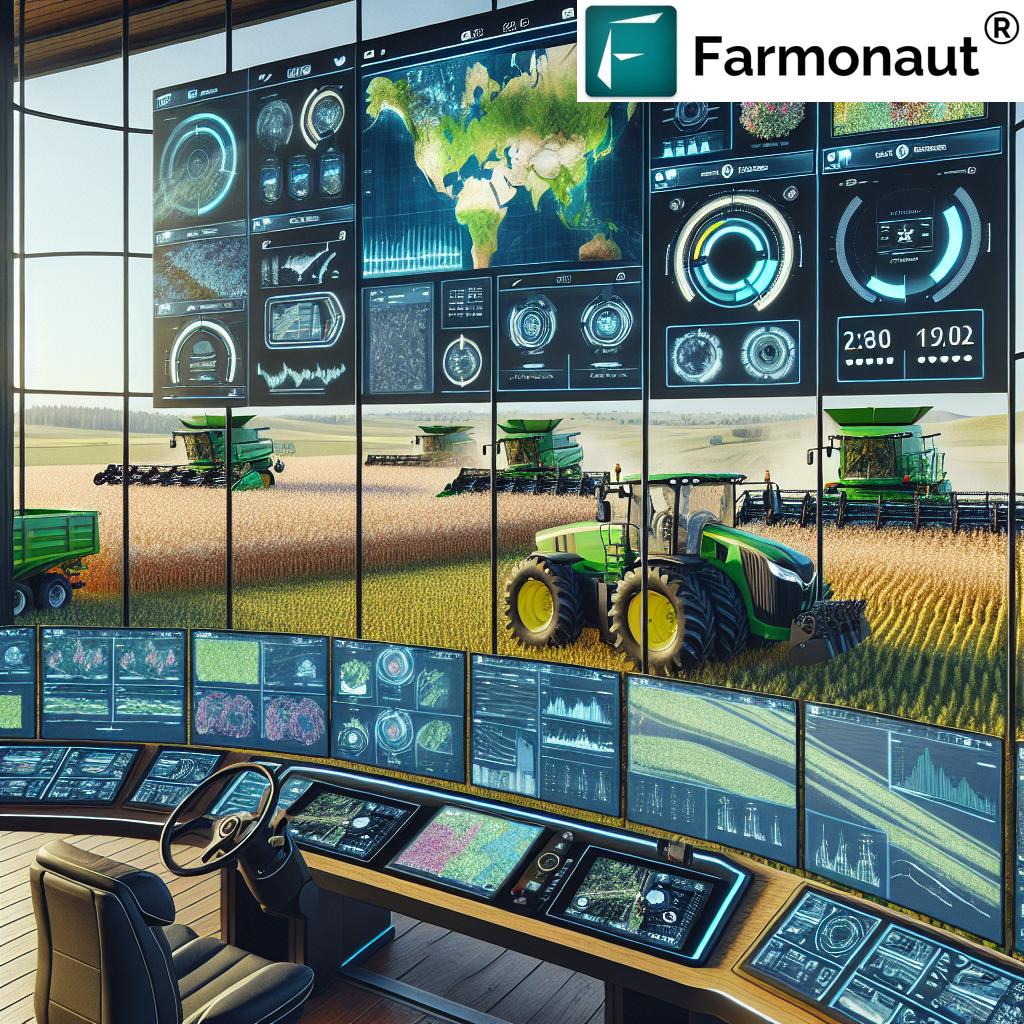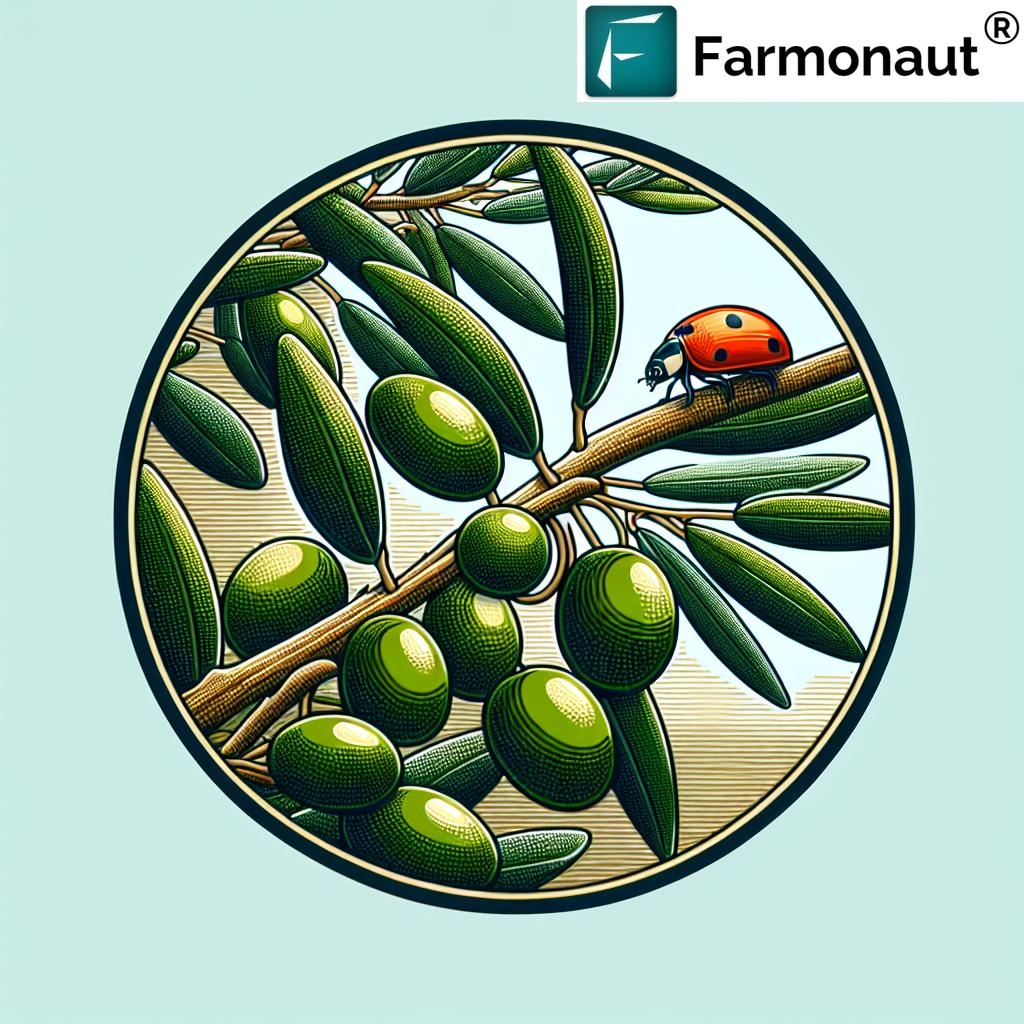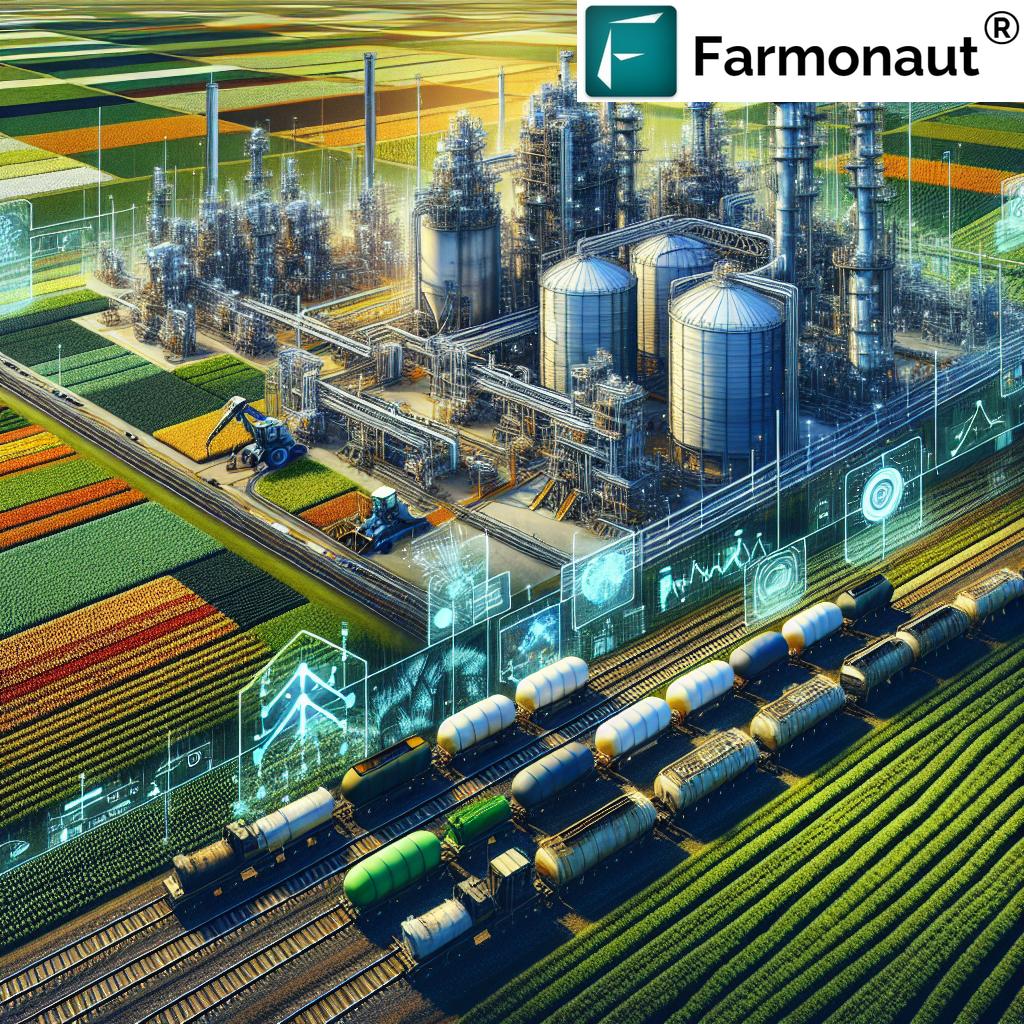Unlock Farm Success: Smart Agriculture Monitoring System Secrets
Table of Contents
- Introduction to Smart Agriculture Monitoring Systems
- Why Choose Smart Agriculture Monitoring?
- Core Components of Agriculture Monitoring Systems
- Key Applications in Precision Farming
- Farmonaut: Advanced Satellite-based Farm Management Solutions
- Feature Comparison Table: Impact on Farm Operations
- Benefits: Unlocking Productivity, Efficiency & Sustainability
- Challenges and Adoption Considerations
- The Future of Smart Agriculture Monitoring Systems
- Frequently Asked Questions (FAQ)
- Get Started with Farmonaut
“Smart agriculture monitoring systems can increase crop yields by up to 30% through real-time data analytics and precision farming.”
Introduction to Smart Agriculture Monitoring Systems
Welcome to our comprehensive exploration of smart agriculture monitoring systems—the forefront of technology and innovation in farming. In today’s rapidly evolving agricultural landscape, embracing advanced monitoring, IoT-powered analytics, and resource management tools is not just a luxury but a necessity. We, as contributors to modern agriculture, recognize that staying competitive and sustainable requires harnessing the power of IoT in agriculture, precision farming technologies, and data-driven farm resource management.
Global agricultural practices are under increasing pressure to deliver higher yields while conserving resources and minimizing environmental damage. Conventional methods, reliant on intuition and generalized schedules, too often result in overuse of water, fertilizer, and pesticides, limiting efficiency and threatening sustainability. This is where the transformative approach of smart agriculture monitoring—integrating a rich network of sensors, IoT platforms, and advanced analytics—proves to be a game-changer.
As we journey through this detailed guide, we’ll uncover the essential components, key applications, and immense benefits of integrating real-time farm monitoring into your operations. We’ll also introduce the cutting-edge tools and services—like those provided by Farmonaut—designed to make precision agriculture accessible, affordable, and innovative for farmers across the globe.
Why Choose Smart Agriculture Monitoring?
Smart agriculture monitoring systems represent a transformative leap from manual, labor-intensive techniques toward automated, data-driven decision making. But why should we, as farmers, agribusinesses, and agricultural professionals, prioritize this shift?
- Data-Driven Precision: Real-time data empowers us to make precise, tailored interventions for irrigation, fertilization, and crop health monitoring. This leads to healthier crops, higher yields, and reduced waste.
- Resource Efficiency: By monitoring critical parameters such as soil moisture, weather conditions, and plant health, we optimize the use of water, fertilizers, and pesticides—core tenets of sustainable farming practices.
- Environmental Sustainability: Optimizing inputs reduces our environmental impact, supporting long-term soil health and ecosystem balance.
- Boosted Productivity and Profits: The predictive analytics for farming and automation possible through these systems provide a direct pathway to increased crop yields and profitability.
- Risk Management: Anticipating weather events, disease outbreaks, or pest infestations enables us to take preventative actions—minimizing losses and safeguarding farm investments.
Whether overseeing a few hectares or vast plantations, adopting smart agriculture monitoring systems ensures that our agricultural practices are not only productive but also resilient, sustainable, and future-proof.
“Over 60% of farmers using advanced monitoring systems report significant reductions in water and fertilizer usage.”
Core Components of Agriculture Monitoring Systems
To truly unlock the power of real-time farm monitoring and precision farming technologies, it’s vital to understand the key components that make up a comprehensive agriculture monitoring system. These interconnected elements work in synergy to deliver actionable insights, automate resource allocation, and drive operational efficiency:
1. Sensors: The Eyes and Ears of Precision Farming
Sensors are at the core of smart agriculture monitoring systems. Placed throughout fields, greenhouses, or livestock facilities, they continuously collect invaluable data and help measure vital parameters. Key types include:
- Soil Sensors: Monitor soil moisture, temperature, and nutrient content. These enable precise irrigation and fertilization strategies to be implemented, saving resources and maximizing crop health.
- Weather Sensors: Designed to monitor atmospheric conditions like temperature, humidity, wind speed, and rainfall. These tools are central for weather forecasting, risk management, and planning field activities.
- Leaf Sensors: These assess plant health by detecting water stress, nutrient deficiencies, or disease symptoms, facilitating timely interventions that prevent yield loss.
2. Data Analytics Platforms: Turning Data into Actionable Insights
Data alone is not enough; the true value lies in comprehensive agriculture data analytics. Powerful platforms aggregate data collected by each sensor, process and analyze it, then present actionable insights via intuitive dashboards. This enables us to:
- Perform predictive analytics for farming—anticipating issues before they occur, like pest outbreaks or water shortages.
- Receive decision support for optimizing planting schedules, irrigation timing, and input application.
- Track crop health monitoring from growth to harvest for yield prediction and quality control.
3. Actuators and Automated Systems: Bringing Automation to the Fields
By leveraging the analytical power of data platforms, actuators and automated systems can precisely control field operations:
- Automated Irrigation Systems use real-time soil and weather data to determine optimal watering, reducing manual labor and resource waste.
- Fertilizer and Pesticide Application Automation ensures inputs are applied only when and where needed.
- Climate Control in Protected Cropping: Greenhouses can automatically adjust temperature, humidity, and ventilation for optimal plant growth.
4. Communication Networks and IoT Integration
The Internet of Things (IoT) is the backbone of connectivity for smart agriculture:
- Enables fast, seamless data transfer between field devices and management platforms.
- Allows remote real-time farm monitoring and control of all connected assets.
- Facilitates large-scale deployment of sensors at low cost.
IoT in agriculture is what turns isolated devices into an intelligent, integrated farm ecosystem.
Key Applications of Smart Agriculture Monitoring Systems
Let’s explore how innovative platforms, sensors, and analytics power practical, high-value applications for all stages of farm operations and resource management:
Precision Irrigation
- By analyzing soil moisture and weather data, smart systems determine optimal watering schedules. This means no more over- or under-watering—just what your crops need, when they need it.
- Automated irrigation systems respond to real-time data, conserving water and reducing labor costs.
Crop Health Monitoring and Disease Detection
- Continuous monitoring of plant leaf health, water stress, and nutrient deficiencies enables rapid responses to pests and diseases.
- Early detection via sensors or satellite imagery allows us to mitigate crop damage before severe yield losses occur.
For deeper AI-driven crop health analysis, Farmonaut’s platform offers a suite of monitoring tools, including satellite-based vegetation indexes and personalized AI advisory via Jeevn AI.
Yield Prediction and Farm Planning
- Predictive models help estimate future yields, empowering us to plan harvests, allocate resources, and secure contracts more effectively.
- Platforms such as Farmonaut deliver regular yield prediction updates, leveraging satellite and IoT data.
Livestock Management
- Wearable devices and environmental sensors track animal health metrics such as heart rate, activity, and stress levels, facilitating disease prevention and efficient herd management.
- Early intervention reduces veterinary costs and boosts farm productivity.
Resource and Fleet Management
- Advanced resource monitoring allows us to optimize the use and deployment of equipment, fertilizer, and irrigation infrastructure.
- Solutions like Farmonaut’s Fleet Management system assist in tracking vehicles and machinery, improving logistics, reducing operating costs, and increasing overall efficiency.
Blockchain-Based Traceability and Compliance
- Modern supply chains demand transparency. By using technologies like blockchain-based traceability, farmers and businesses create immutable, verifiable records of product origin, input use, and handling.
- This builds consumer trust, enhances food safety, and simplifies compliance with regulations.
Environmental Monitoring & Carbon Footprinting
- Track and reduce your farm’s environmental footprint using platforms such as Farmonaut’s Carbon Footprinting module, which quantifies emissions and offers actionable recommendations for sustainability and compliance.
Farmonaut: Advanced Satellite-based Farm Management Solutions
Farmonaut is at the cutting edge of democratizing precision agriculture—ensuring that every farmer, agribusiness, and government body can access world-class smart agriculture monitoring tools. Here’s how Farmonaut stands out:
-
Satellite-Based Crop Health Monitoring: Utilizing multi-spectral imagery processed through AI and machine learning, Farmonaut offers real-time insights into crop health, soil moisture, and vegetation indices (NDVI, NDRE, etc.).
Benefit: Optimize irrigation, detect disease or pests early, and reduce input costs. - AI Advisory and Weather Forecasting: The Jeevn AI system delivers personalized farm management advice based on continuous monitoring, satellite data, and hyper-local weather predictions.
- Fleet & Resource Management: Farmonaut’s platform enables automated tracking and scheduling of farm machinery and resources, minimizing downtime and operational costs.
- Blockchain-based Traceability Solutions: For industries demanding robust supply chain transparency, Farmonaut’s traceability platform provides end-to-end product journey records.
- Environmental Compliance: With tools like carbon footprint tracking, users track, manage, and reduce emissions for regulatory compliance and brand sustainability.
-
API Access: For agritech developers and businesses seeking to integrate remote sensing and weather data into their own solutions, Farmonaut provides a robust API.
API Developer Docs - Large-Scale Farm Management Platform: For cooperatives, agro-industrial operators, and government projects, Farmonaut’s Large-Scale Farm Management App delivers robust mapping, monitoring, and reporting capabilities.
- Crop Loan and Insurance Verification: Users, including financial institutions, can perform satellite-based verification of crops for loans and insurance, reducing fraud and easing access to credit.
Get Started with the Farmonaut App now to experience the future of sustainable farming!
Feature Comparison Table: The Impact of Smart Monitoring Systems
Note: Percentage values are based on industry averages and may vary with crop, geography, and existing practices.
Benefits of Smart Agriculture Monitoring Systems
The benefits of embracing smart agriculture monitoring platforms and analytics-driven farm resource management are vast and measurable. Here’s how these transformative tools elevate agriculture across the board:
- Enhanced Productivity: Informed, timely interventions translate directly to increased yields and healthier crops.
- Sustainability: Strategic use of water, fertilizer, and pesticide inputs minimizes environmental impact and fosters sustainable farming practices.
- Cost Efficiency: Reduced resource wastage and automation of labor-intensive processes keep operational costs in check.
- Data-driven Decision Making: Access to historical and real-time insights enables smarter, risk-averse management for farm owners and stakeholders.
- Risk Mitigation: Early warnings of pests, weather anomalies, or soil imbalances allow for pre-emptive measures, decreasing yield losses and financial risk.
- Regulatory Compliance and Market Trust: Transparent traceability systems build consumer and industry trust, while also making regulatory reporting seamless.
Platforms such as Farmonaut are leading the charge, offering affordable, accessible solutions to farmers of any scale.
Challenges and Adoption Considerations
While the benefits of smart agriculture monitoring systems are clear, several challenges may impact adoption:
- High Initial Investment: While the long-term ROI is positive, up-front costs for comprehensive systems can be a hurdle for smaller farms. Subscription-based platforms like Farmonaut lower this barrier, offering flexible options for all operation sizes.
- Data Security and Privacy: With the increase in sensitive data collection, maintaining high standards of cybersecurity and data privacy is crucial.
- Technical Complexity: Effective deployment and ongoing operation of smart platforms often require some level of technical proficiency. The move toward user-friendly interfaces—such as those in Farmonaut apps—directly addresses this barrier.
- Device and Platform Interoperability: Ensuring compatibility among various IoT, sensor, and analytics platforms can be challenging.
- Connectivity Limitations: Remote or rural zones may lack the communications infrastructure necessary for real-time monitoring. Satellite-based solutions, such as those offered by Farmonaut, obviate the need for dense ground infrastructure.
Farmonaut Subscriptions – Choose Your Plan
Access affordable, scalable smart agriculture monitoring for every need—from small plots to vast agro-enterprises.
The Future of Smart Agriculture Monitoring Systems
The future is bright—and smarter. As we continue to see breakthroughs in artificial intelligence, IoT, and aerial remote sensing, here are some trends shaping tomorrow’s agriculture:
- Deeper AI Integration: Artificial intelligence continues to drive predictive analytics and autonomous decision systems, making farm operations even more responsive and adaptive.
- Unmanned Aerial Vehicles (UAVs): Drones and satellites are improving the aerial monitoring of crop health and conditions across large or inaccessible areas.
- Greater Accessibility: Enhanced mobile apps, Farmonaut Web & Mobile platforms, and intuitive dashboards simplify smart monitoring for all users, regardless of technical background or farm scale.
- Holistic Sustainability: Integration of modules for carbon footprinting, biodiversity tracking, and regenerative practices mean that sustainable farming practices will be the default, not the exception.
The convergence of affordability, ease of use, and technical advancement positions smart agriculture monitoring systems as the primary driver of global food security, resilience, and profitability in the decades to come.
Frequently Asked Questions (FAQ) – Smart Agriculture Monitoring Systems
Q1: What is a smart agriculture monitoring system?
A smart agriculture monitoring system integrates sensors, IoT devices, data analytics platforms, and automation tools to collect, analyze, and act upon real-time information about crops, soil, weather, and agricultural operations. These systems help us optimize resources, boost yields, and implement sustainable farming practices.
Q2: How does IoT in agriculture benefit farm management?
IoT in agriculture enables seamless connectivity between devices—like sensors, actuators, weather stations, and analytics platforms. This allows for real-time monitoring and automation, empowering us to make faster and more informed decisions for efficient farm resource management.
Q3: Can I use smart monitoring if I have a small farm?
Yes! Innovative solutions, especially cloud-based and satellite-driven systems like Farmonaut, are designed for scalability and affordability. You can monitor even a single plot via mobile apps, with flexible plans tailored to smallholders and individual farmers.
Q4: What challenges should I expect when adopting smart agriculture platforms?
Some common challenges include the initial investment, potential need for technical learning, and ensuring reliable internet or satellite connectivity. Farmonaut alleviates these via intuitive designs, subscription models, and support for offline and remote zones through satellite integration.
Q5: How does blockchain improve traceability in agriculture?
Blockchain-based traceability, as offered by Farmonaut, securely records each stage of a product’s journey—from field to consumer. This increases transparency, minimizes fraud, and assures consumers of the origin, handling, and integrity of their food or fiber products.
Get Started: Experience the Future of Sustainable Farming with Farmonaut
Embracing smart agriculture monitoring systems is the key to thriving amidst the challenges of the modern agricultural world. By combining advanced technologies, IoT, actionable analytics, and easy app access, we can ensure that resource efficiency, high yields, and environmental sustainability go hand-in-hand. Join thousands of farmers and agribusinesses leveraging Farmonaut’s precision farming tools today!
For developers and agritech businesses:
Explore Farmonaut’s API to seamlessly integrate satellite and weather data into your solutions.
View API Developer Docs
In Summary:
Smart agriculture monitoring systems are not just a technological trend—they are the foundation of the next generation of global farming. By leveraging real-time data, AI-driven insights, and innovative automation, we can transform traditional agriculture into a productive, profitable, and environmentally responsible endeavor for all.


